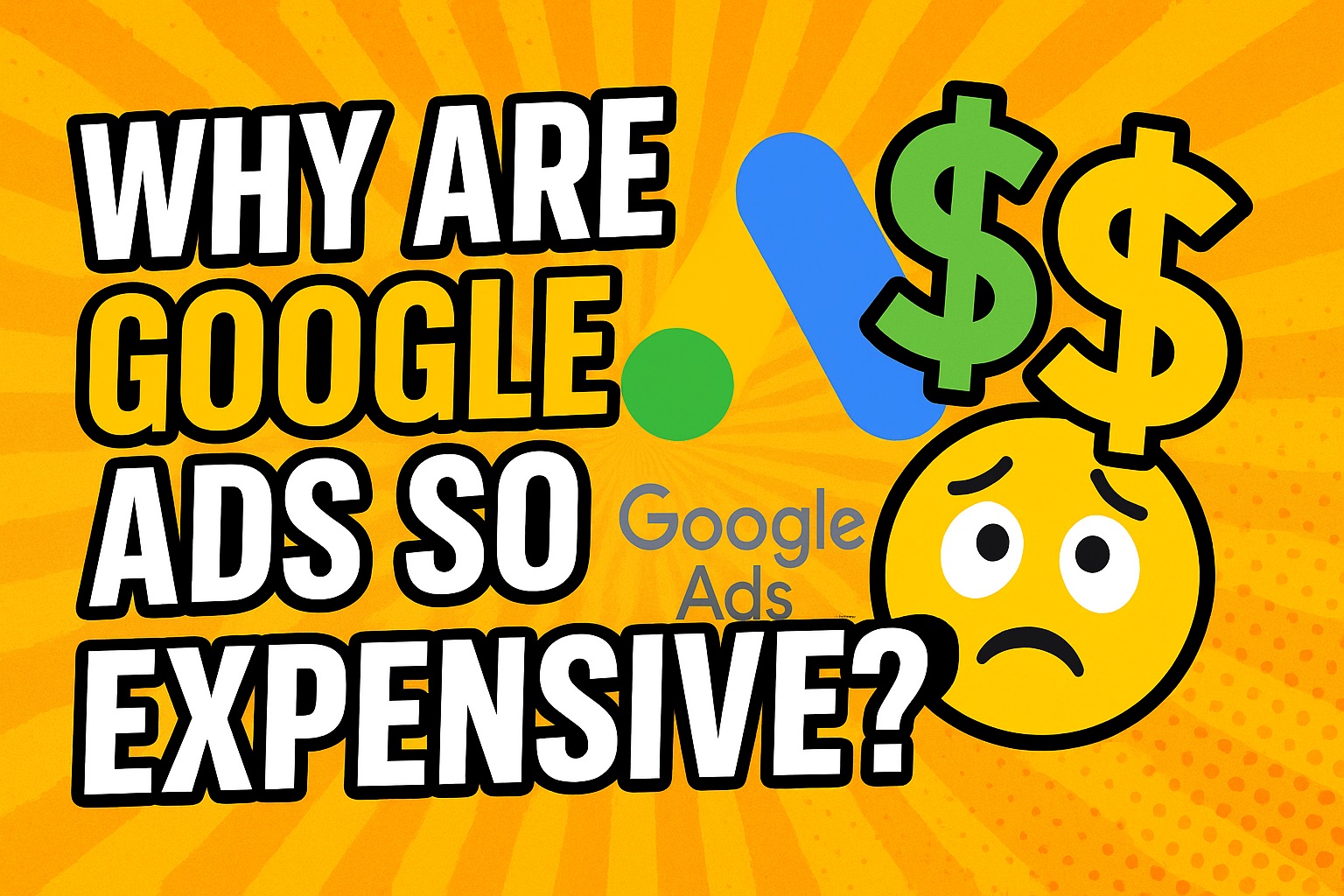Google Ads is one of the most popular and effective online advertising platforms, allowing businesses to reach users actively searching for their products or services. But for many business owners and beginners, it often feels expensive — with some industries paying several dollars (or more) per click. The question many ask is: why do Google Ads cost so much?
In this guide, we’ll break down the factors that drive Google Ads pricing, explore which industries face the highest costs, and explain what you can do to control your budget while still achieving strong results.
Key Factors That Drive Up Google Ads Costs
Several key factors influence why Google Ads can feel expensive, especially for competitive industries:
1. Auction-Based System:
Google Ads operates as an auction where advertisers bid on keywords. The more businesses competing for the same keyword, the higher the cost-per-click (CPC) tends to be.
2. Keyword Demand:
Some keywords naturally attract more advertisers. For example, legal, finance, and insurance-related searches often have many advertisers willing to pay premium prices because one conversion can generate significant revenue.
3. Quality Score:
Google evaluates ads based on relevance and user experience, assigning a Quality Score that affects your ad rank and CPC. Lower Quality Scores can lead to higher costs, as you’ll pay more to compete for the same position.
4. Ad Rank Competition:
Your ad’s position is determined by your bid and ad quality relative to competitors. When others bid aggressively and have strong ads, maintaining a top position becomes more expensive.
5. Geographic Targeting:
Costs can vary by location. In densely populated or affluent areas, competition for local searches increases, raising CPCs.
In short, Google Ads prices are market-driven: more competition and lower ad relevance result in higher costs for advertisers.
Industries With the Highest Google Ads Costs
Not all industries pay the same in Google Ads — some face far higher average costs-per-click (CPC) due to intense competition and high customer lifetime value. The most expensive industries typically include:
- Legal:
Keywords like “personal injury lawyer” or “DUI attorney” can exceed $50 per click in some markets. The potential return from a single client justifies the high bids. - Finance and Insurance:
Terms like “car insurance quotes” or “mortgage refinance” often attract CPCs of $20–$40 because companies know a conversion could lead to long-term, profitable customers. - Healthcare:
Specialized services such as “cosmetic surgery” or “rehab centers” command high CPCs due to the value of a patient acquisition. - Marketing Services:
Agencies and software companies bidding on terms like “SEO services” or “PPC management” also see elevated CPCs due to competition. - Home Services:
Keywords related to urgent needs — such as “plumber near me” or “emergency locksmith” — can also be expensive, driven by immediate consumer intent and competition.
In these industries, businesses are often willing to pay premium CPCs because even a single conversion may result in significant revenue or long-term clients.
Common Mistakes That Waste Budget
Many advertisers experience high Google Ads costs not just because of market conditions, but due to avoidable mistakes that lead to wasted spend. Here are some of the most common pitfalls:
1. Poor Keyword Targeting:
Using overly broad or irrelevant keywords can cause ads to appear for searches that don’t match your audience, resulting in expensive but low-quality clicks.
2. Neglecting Negative Keywords:
Without a strong negative keyword list, your ads may show for irrelevant searches, draining your budget on unqualified traffic.
3. Weak Ad Copy and Relevance:
Ads that don’t closely match the user’s intent or search terms may have lower Quality Scores, leading to higher CPCs and fewer conversions.
4. Ignoring Landing Page Experience:
Even if your ads attract clicks, a poorly optimized landing page can discourage users from taking action, increasing your cost-per-conversion and reducing ROI.
5. No Geo-Targeting or Audience Refinement:
Failing to restrict ads to relevant locations or audiences leads to wasted impressions and clicks from people outside your target market.
By avoiding these mistakes, advertisers can often significantly reduce costs while improving performance.
How to Manage and Reduce Your Google Ads Costs
While some Google Ads costs are driven by market competition, there are practical ways to control your budget and improve return on investment:
1. Use More Specific Keywords:
Target long-tail keywords that are more specific and less competitive. These terms often have lower CPCs and attract users with clearer intent.
2. Refine Audience Targeting:
Limit ads to your ideal customer by using geo-targeting, device targeting, and audience segments. This reduces wasted spend on irrelevant clicks.
3. Build and Maintain a Negative Keyword List:
Continuously analyze search term reports and add irrelevant queries to your negative keyword list to prevent showing your ads to the wrong audience.
4. Improve Quality Score:
Focus on writing relevant ads that match user intent and drive to fast, mobile-friendly landing pages with clear calls to action. Higher Quality Scores can reduce your CPC and improve ad placement.
5. Adjust Bidding Strategies:
Use smart bidding options (e.g., Target CPA or Maximize Conversions) if your goal is efficiency rather than just high ad position. These automated strategies can optimize for conversions at the lowest cost.
6. Regular Campaign Reviews:
Monitor performance metrics like click-through rate (CTR), conversion rate, and cost-per-conversion. Pause underperforming ads and reinvest in campaigns that deliver results.
By actively managing and optimizing your account, you can reduce wasted ad spend and make your budget go further — even in expensive industries.
Conclusion
Google Ads can feel expensive, especially in competitive industries where high CPCs are common. However, these costs are driven by factors like keyword demand, auction competition, and ad relevance — many of which you can manage strategically. By understanding why costs are high, avoiding common mistakes, and applying optimization techniques, businesses can improve efficiency and achieve better returns on their ad spend. With careful planning and ongoing refinement, Google Ads can remain a valuable and cost-effective channel for reaching your audience and growing your business.
